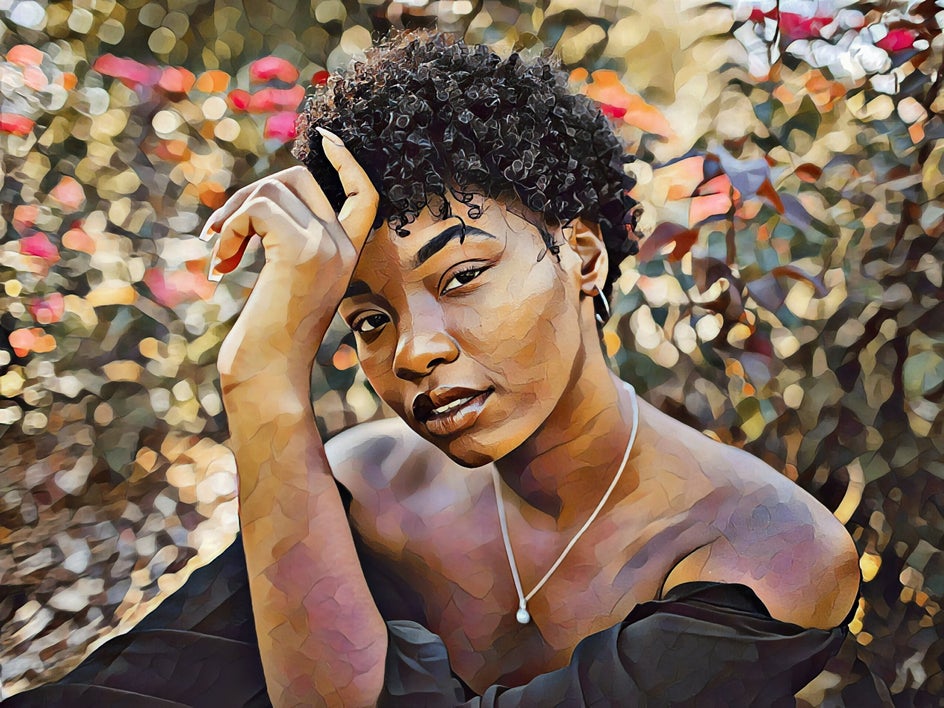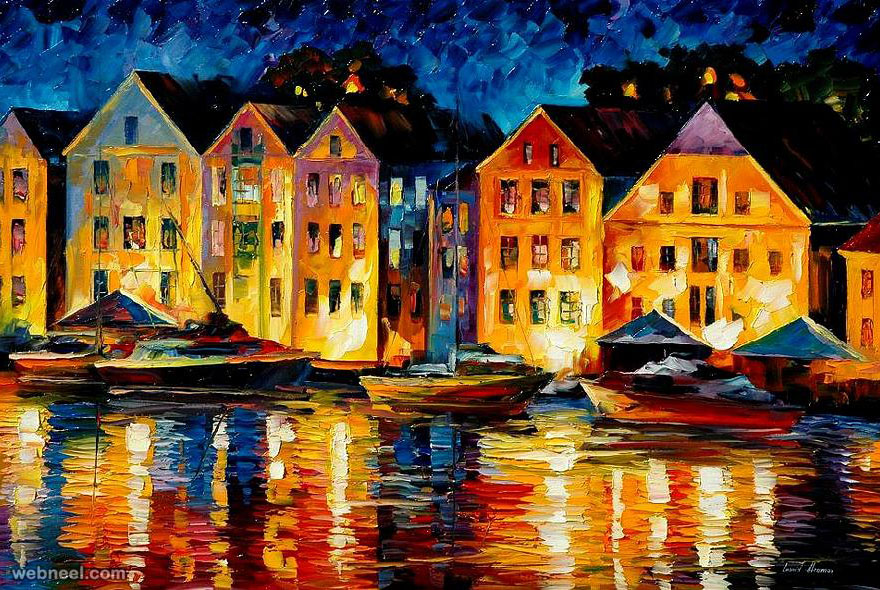High-Quality Framed Oil Paintings for Sale Direct from Painters
High-Quality Framed Oil Paintings for Sale Direct from Painters
Blog Article
Discovering All About Oil Paintings: A Guide to Recognizing Their Elegance and Worth
Oil paints have mesmerized audiences for centuries, using a glance right into the creative proficiency of various eras. Their rich background is intertwined with ingenious techniques and profound emotional expression. Understanding the materials and approaches behind these artworks can boost appreciation. Additionally, the market for oil paintings offers possibilities for investors and collectors alike. As one discovers this remarkable globe, the inquiry occurs: what makes an oil painting genuinely important?
The Background of Oil Paint: A Journey With Time
Oil paint has roots that date back to ancient times, it genuinely grew throughout the Renaissance, when musicians discovered its flexibility and abundant color potential. Early examples can be traced to the 7th century, with methods developing notably throughout societies. The tool came to be prominent in Northern Europe in the 15th century, specifically through the works of artists like Jan van Eyck, that originated its use for thorough realism and vivid hues. This period marked a separation from tempera paints, permitting greater depth and texture. As oil painting spread, it influenced countless artists, resulting in work of arts by prominent figures such as Leonardo da Vinci and Rembrandt. The medium's tradition proceeds, forming the art globe well right into modern-day times.
Recognizing Oil Repaints: Materials and Techniques
As musicians check out the globe of oil paints, they come across a diverse variety of materials and techniques that define this tool. The key elements of oil paint include pigments, which give shade, and drying out oils, such as linseed, that bind the pigments and help with application. Various additives can customize the paint's texture and drying out time, improving flexibility. Methods like glazing, where clear layers are accumulated, and impasto, which includes using thick paint, allow for different visual impacts. In addition, using brushes, combination blades, and even fingers can develop one-of-a-kind appearances and surfaces. Understanding these products and strategies makes it possible for musicians to fully reveal their creativity and achieve the desired effect in their art work.
The Role of Shade in Oil Paintings
Shade plays a critical duty in oil paintings, influencing both visual allure and psychological vibration. Understanding color concept fundamentals, consisting of the connections between shades, can enhance an artist's capacity to communicate mood and atmosphere. In addition, understanding color mixing techniques enables higher depth and splendor in a paint's combination.

Shade Concept Fundamentals
Understanding color concept is vital for artists functioning with oil paints, as it develops the foundation for creating aesthetically appealing and unified make-ups. Shade concept includes the study of how shades connect, the color wheel, and the connections between key, second, and tertiary shades. Artists utilize complementary colors to enhance contrasts and produce focal factors, while analogous shades promote unity and cohesiveness within an item. Furthermore, the concepts of warm and amazing colors affect the perception of depth and room in a paint. Grasping these concepts allows artists to control shade effectively, guiding the audience's eye and connecting their designated message. Proficiency of shade theory inevitably enhances an artist's capacity to communicate emotions and concepts with their work.
Psychological Effect of Shade
The psychological impact of color in oil paints plays a crucial function in how audiences connect and perceive with art work. Colors evoke particular sensations and moods, affecting the viewer's mood. For circumstances, warm hues like reds and oranges can produce a sense of warmth and energy, while trendy tones such as blues and greens often stimulate peace or self-questioning. Artists purposefully select shade combinations to enhance narrative components, directing the target market's psychological journey. The saturation and comparison of shades further intensify these effects, attracting interest and developing emphasis. Inevitably, the interplay of shades in oil paints not only improves their aesthetic charm yet also works as a powerful medium for psychological expression, enhancing the customer's experience and analysis.
Color Mixing Techniques
While lots of elements of oil painting add to the total composition, grasping color blending methods is vital for achieving wanted impacts and deepness. Color mixing can be come close to through numerous techniques, including the additive and subtractive procedures. Additive mixing entails integrating shades of light, while subtractive blending relies upon pigments, where colors blend to create brand-new tones. Artists typically use a minimal combination to create harmonious jobs, recognizing the relationships in between primary, second, and tertiary shades. Methods such as glazing and scumbling further enhance deepness and brightness. By masterfully mixing colors, a musician can evoke emotions, develop focal factors, and accomplish a feeling of realistic look, eventually elevating the paint's aesthetic and emotional impact.
Famous Oil Painters and Their Iconic Functions

Famed for their mastery of color and technique, oil painters have created a few of one of the most well known artworks in background. Popular musicians like Vincent van Gogh mesmerized audiences with his emotive brushwork in "Starry Night," while Claude Monet's "Impact, Sunup" laid the foundation for Impressionism. Leonardo da Vinci's "Mona Lisa" stays a long-lasting symbol of artistic wizard, showcasing his ability in capturing human expression. Rembrandt's "The Night Watch" highlights his cutting-edge usage of light and darkness. Various other notable numbers consist of Pablo Picasso, that reinvented contemporary art with his strong experimentation in works like "Les Demoiselles d'Avignon," and Georgia O'Keeffe, whose vibrant representations of landscapes and blossoms aided specify American modernism. Each artist's distinct style added greatly to the oil paint landscape.
Just how to Examine the High Quality of an Oil Painting
Assessing the top quality of an oil paint involves a careful analysis of workmanship techniques, as well as an evaluation of color and composition. Observing brushwork, layering, and the application of paint can disclose the artist's skill degree. Additionally, the interaction of colors and the overall setup of aspects contribute substantially to the painting's visual value.
Assessing Workmanship Methods
A meticulous analysis of craftsmanship strategies is crucial for figuring out the high quality of an oil paint. Evaluators should initially check out the application of paint; thick, distinctive brushstrokes may recommend an experienced hand, while overly consistent applications might indicate a lack of depth. oil paintings for sale. The layering technique is additionally crucial; the existence of glazes and differed thickness can boost brightness and complexity. In addition, the high quality of the materials made use of, such as the canvas and pigments, plays a considerable role in durability and general aesthetic. Focus to detail in components like edges and changes between shades mirrors the musician's dedication to their craft. Inevitably, these techniques add to the painting's psychological effect and market price, acting as indications of the musician's ability and intent
Evaluating Color and Structure
While evaluating the top quality of an oil painting, one need to focus on the interaction of shade and composition, as these components are fundamental to the artwork's total effect. Shade choices can stimulate feelings and establish mood; consequently, the artist's scheme should be checked out for harmony and contrast. A healthy make-up directs the customer's eye and develops a sense of unity. Artists commonly employ methods like the guideline of thirds or leading lines to boost aesthetic interest. Furthermore, the use of light and darkness can include deepness, improving the three-dimensionality of the paint. Eventually, a successful oil painting marries shade and make-up, engaging the visitor and welcoming a much deeper appreciation of the artist's vision and method.
Caring for and Preserving Oil Paintings
Proper treatment and conservation of oil paintings is vital for preserving their integrity and longevity. To protect these art work, it is crucial to show them away from direct sunlight, which can create fading and staining. Preserving a stable setting with regulated temperature and moisture additional aids in avoiding damage. Cleansing ought to be done gently making use of a soft, dry cloth, staying clear of any harsh chemicals that can hurt the paint or varnish. Regular examinations for indications of wear and tear, such as cracking or flaking, are a good idea. When carrying or storing oil paintings, proper cushioning and framework are needed to prevent physical harm. Inevitably, attentive care contributes to the aesthetic charm and value of oil paintings with time.
The Market for Oil Paints: Investing and gathering
Recognizing the market characteristics for oil paints is important for financiers and enthusiasts alike. The worth of these artworks is affected by different elements, consisting of the artist's reputation, historic importance, and existing patterns. Enthusiasts commonly seek items that reverberate click here directly while thinking about potential admiration in worth. Auctions and galleries work as main places for trading, with prices varying based upon need and rarity. Spending in oil paints requires research into the marketplace, as well as an understanding of authenticity and provenance. In addition, emerging musicians might provide opportunities for substantial returns, while developed names can regulate high prices. Overall, a tactical strategy to collecting can produce both aesthetic pleasure and financial rewards.

Often Asked Questions
What Are the Ecological Impacts of Oil Paint Materials?
The environmental impacts of oil paint materials consist of the release of unpredictable organic substances (VOCs), damaging waste generation, and source extraction for pigments. These variables add to pollution and eco-friendly degradation, elevating worries amongst environmentally conscious artists and customers.
Just How Do Various Canvases Influence Oil Painting Results?
Various canvases affect oil painting results substantially. Absorbency, surface, and texture top quality can alter paint application, drying out times, and shade vibrancy. Artists often select details canvases to attain desired impacts and boost their artistic expression.
Can Oil Paintings Be Brought Back if Damaged?
Oil paints can indeed be recovered if harmed. Expert conservators use various techniques to fix tears, tidy surface areas, and address staining, ensuring that the art work maintains its original appeal and value for future generations.
What Are the Signs of an Initial Oil Painting?
The signs of an initial oil painting consist of visible brush strokes, texture variants, and an uneven canvas weave (oil paintings for sale). In addition, credibility may be validated with provenance, trademarks, and the existence of a varnish layer distinct to oil tools
Exactly How Has Technology Influenced Modern Oil Paint Techniques?
Technology has actually considerably influenced contemporary oil painting methods by introducing electronic devices for planning, boosted materials for texture and long life, and online systems for offering and sharing art, thereby broadening musicians' innovative opportunities and audience get to. Oil paint has roots that date back to old times, it truly thrived throughout the Renaissance, when artists found its flexibility and rich shade capacity. The emotional impact of shade in oil paints plays a critical function in exactly how viewers connect and regard with art work. While numerous facets of oil paint contribute to the general structure, understanding color mixing methods is necessary for achieving desired impacts and depth. Reviewing the quality of an oil painting includes a cautious analysis of workmanship techniques, as well as an analysis of color and composition. While examining the high quality of an oil paint, one have to concentrate on the interplay of color and composition, as these elements are fundamental to the artwork's overall impact.
Report this page